Join a powerful, unprecedented alliance for better eye health for all.
Join IAPB-
Choose an alternate language here
On International Women’s Day, Victoria Sheffield, President & CEO, International Eye Foundation and Vice President, IAPB reminisces on her journey in eye care…
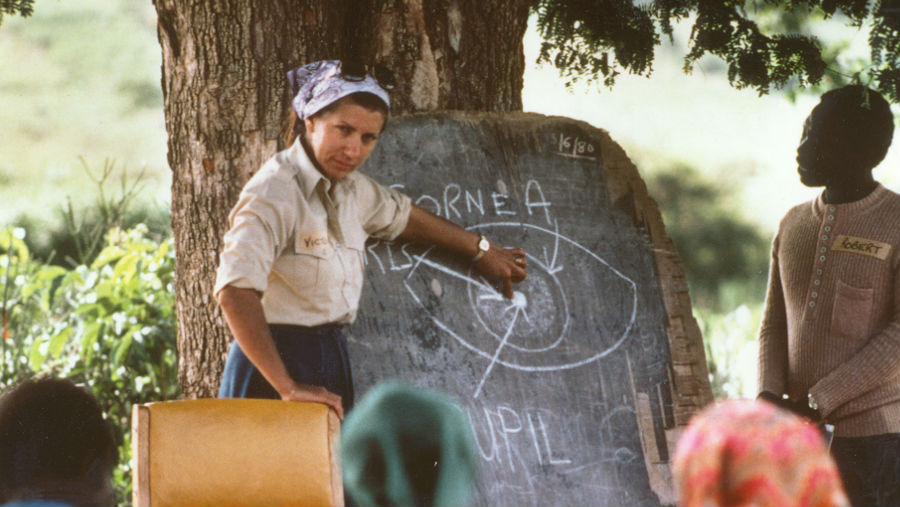
I began my public health journey with a US Air Force assignment at Clark Air Base Hospital in the Philippines (1967-69). We not only cared for wounded soldiers flown in every day from Vietnam, but also Negrito pygmy children living near the base. A group of us trekked to their villages weekly and it was my first exposure to common and uncommon diseases in a developing country village.
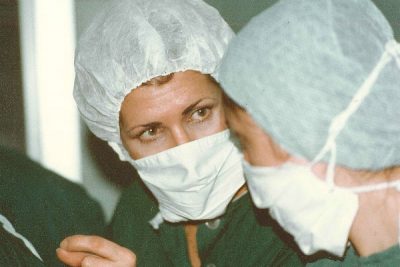
After five years with the Air Force, I found a position in ophthalmology in the US. I remember the day in 1972 when a young Dr. G. Venkataswamy came to talk about his new eye hospital in Madurai that was to be called “Aravind”. I never thought I could support Aravind over the decades through International Eye Foundation (IEF) grants; an example of how someone crosses your path and plants a seed that grows over a lifetime.
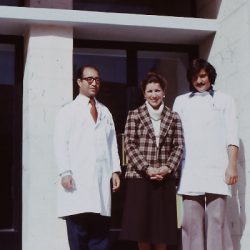
In 1975, I came to Georgetown University in Washington, DC for the two-year Ophthalmic Technology training programme and stayed on. In 1979, I joined an IEF surgical team sent to establish the “new” Jordan Eye Bank in Amman where I taught nurses how to assist in corneal transplant surgery. I then visited the famous St. John Eye Hospital in Jerusalem where the first Jordan Eye Bank was established in 1962 by Dr. David Paton (later, he founded Orbis). Never did I imagine that 15 years later, I would be nominated to the chivalric Order of St. John of Jerusalem in 1994. For my work supporting the hospital and representing the US on the Hospital’s Board of Trustees from 2009-2015, I received the rank of Dame in the Order from HM Queen Elizabeth II. Another path crossed and seed planted.
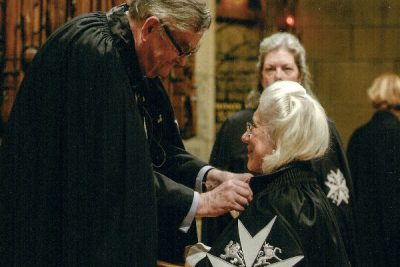
In 1980, IEF’s founder Dr. John Harry King, Jr., hired me to go to Kenya for three years as a training specialist working with Drs. Randolph Whitfield, Paul Steinkuller, and Larry Schwab in the USAID-funded Kenya Rural Blindness Prevention Project. IEF shared offices in Nairobi with RCSB, now SightSavers, where the brilliant Kevin Carey challenged me at every turn and taught me a lot about understanding the needs of those with blindness. My role was to develop customized primary eye care (PEC) training programmes and materials. Teaching nurses and general physicians who hailed from urban areas and had never seen trachoma nor xerophthalmia was an eye opener. I also learned how to effectively teach Village Health Workers (VHWs). They only had a second-grade education and English was not their first language. It meant throwing much of what I knew about training out the window; and my training materials always turned out vastly different after I field tested them. Dr. Felicity Savage King (Felix) at Nyeri, later at WHO/Geneva, said to me over tea “it’s useless to teach VHWs about eye diseases–too much to remember. Better to teach what a normal eye looks like, then they know if something’s wrong”. And, “don’t use medical terms unless you can show what the word means” (say, the ‘cornea’). No technology; just look at each other’s eyes. So, I developed the “Four Rules for a Normal Healthy Eye”:
1) The cornea should be clear,
2) The pupil should be black,
3) The white part should be white, and
4) The eyelids should open and close properly.
If the white part is red or the eyelids are affected, treat locally. If the cornea is not clear or the pupil is not black, refer. Dr. Allen Foster, then a young ophthalmologist in Tanzania, liked the rules and added one of his own:
5) The vision should be normal (back then, it was 6/18 or better).
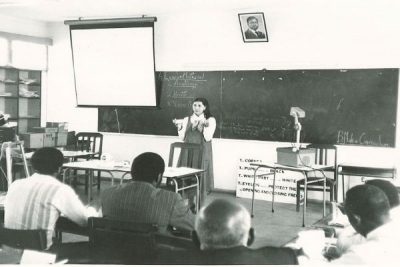
In 1986, I joined Helen Keller International (HKI) and developed training programmes and materials specifically for countries in West Africa and Asia. In Sudan and Ethiopia, for many months over 1985-1990 during the drought and famine, we worked with UNICEF and NGOs to save a generation from xerophthalmia. Thanks to telex and frantic midnight phone calls, Dr. Al Sommer helped me find solutions to issues not in his textbooks (such as Bitot’s spots in an 18-year-old).
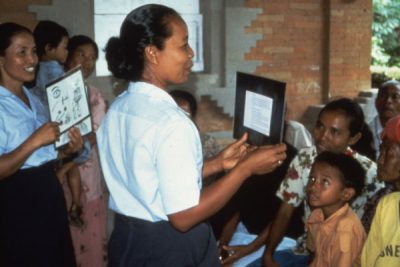
Prof. Gordon Johnson invited me to the International Centre for Eye Health (ICEH) to teach how to develop training materials. My key lesson: field test! Dr. Bjorn Thylefors, then head of WHO/PBL, asked me to go to Geneva to develop posters which were translated into the major languages. Field testing them in multiple countries to get products that would be accepted worldwide was a challenge. When I asked the late Dr. Kazuichi Konyama what to do for those who read right to left and vice versa, he said simply “make the posters vertical”.
In 1990, IEF’s Executive Director position opened up and I was encouraged to apply. At an oncho meeting in Ouagadougou, I shared with Dr. Thylefors that I had applied. He put his hands on my shoulders and said, “it doesn’t matter if you don’t get it, you have shown that you are ready for a leadership position”. It meant a lot to me.
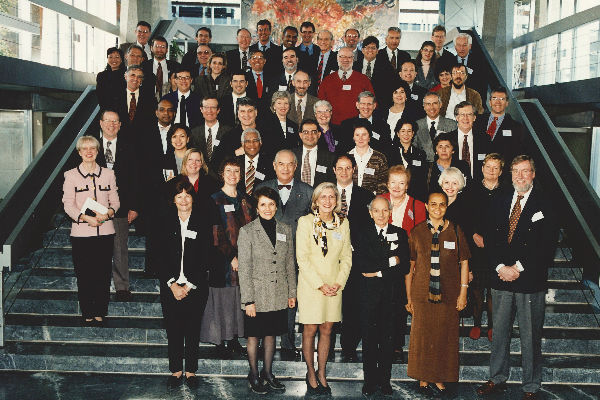
I first became involved with IAPB in 1982 and a decade later, RCSB’s Alan Johns asked me to Chair IAPB’s Partnership Committee, forerunner of the Council of Members. I’m proud that the Committee grew from 13 NGO members and five observers in 1993, to 36 members including the first two “southern” NGOs, Nadi al Bassar and Al Noor/Magrabi Foundation, and 41 observers in 1999 when I stepped down.
Looking back as head of IEF for nearly 30 years and having been nominated by Prof. Hugh Taylor as IAPB’s Vice President, many have empowered me. I am the most fortunate of women having lived and worked in so many countries where everything is always different than you expect, and with colleagues who face their challenges every day to sustain the progress they make. IAPB is full of amazing women and men who have crossed my path and I am ever grateful!
[vc_row el_class=”light-row rebelcell prev-blind”][vc_column width=”1/2″ el_class=”cellspace”][vc_column_text]
[/vc_column_text][vc_column_text]
[/vc_column_text][vc_separator color=”white”][vc_column_text]
[/vc_column_text][vc_separator color=”white”][vc_column_text]
[/vc_column_text][vc_separator color=”white”][vc_column_text]
[/vc_column_text][vc_separator color=”white”][vc_column_text]
[/vc_column_text][vc_separator color=”white”][/vc_column][vc_column width=”1/2″ el_class=”cellspace”][vc_column_text]
[/vc_column_text][vc_separator color=”white”][vc_column_text]
[/vc_column_text][vc_separator color=”white”][vc_column_text]
[/vc_column_text][vc_separator color=”white”][vc_column_text]
[/vc_column_text][vc_separator color=”white”][vc_column_text]
[/vc_column_text][/vc_column][/vc_row]